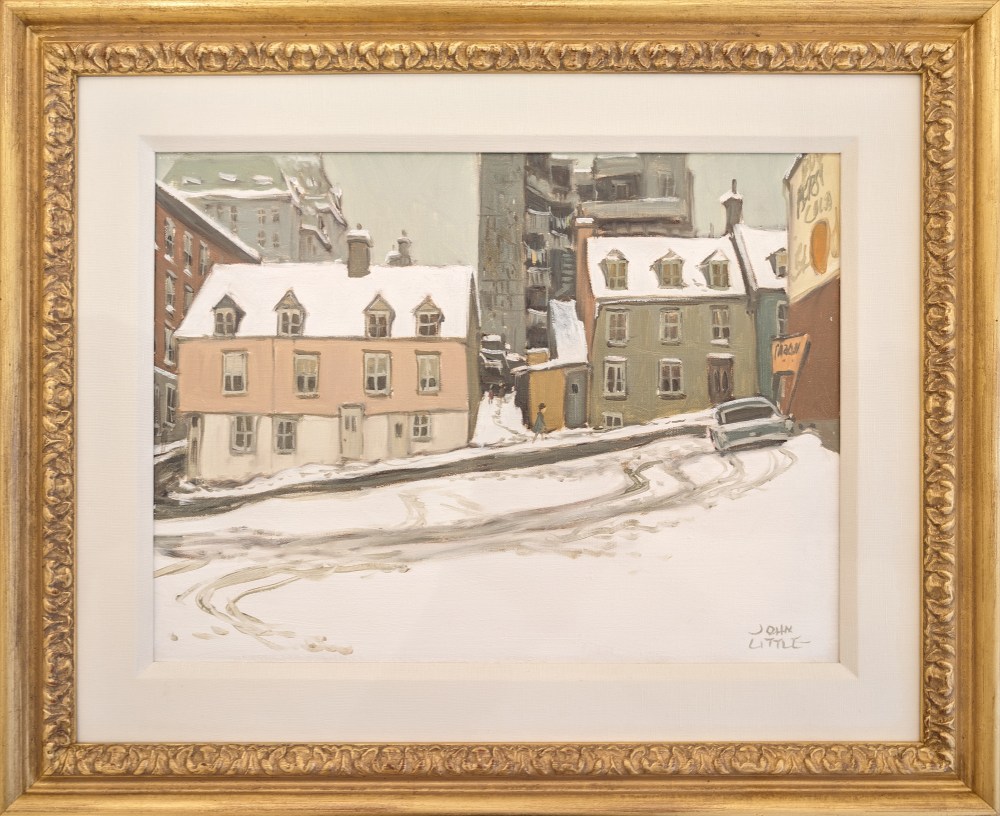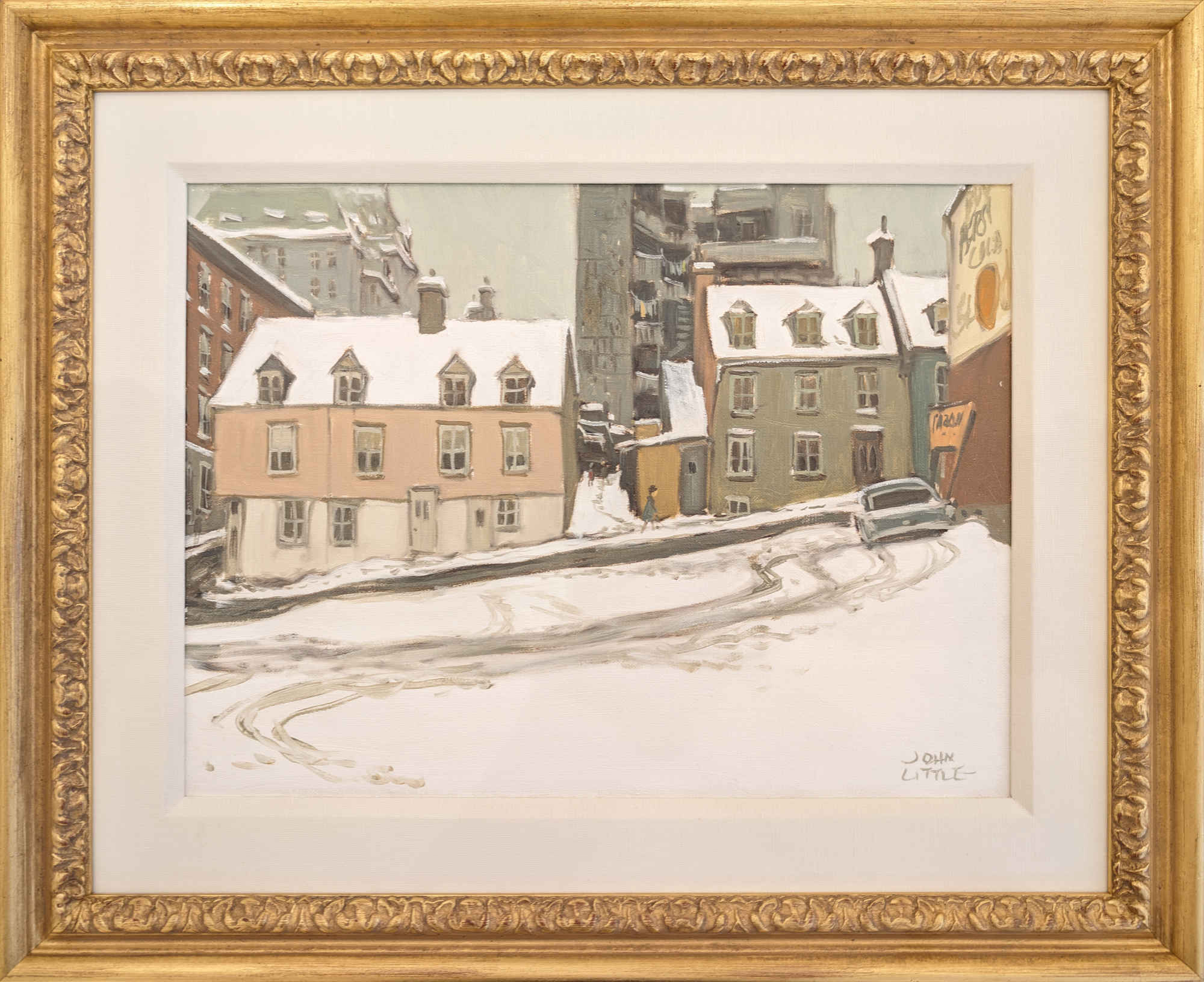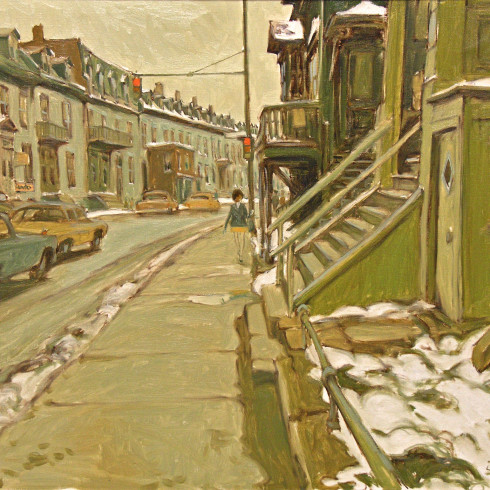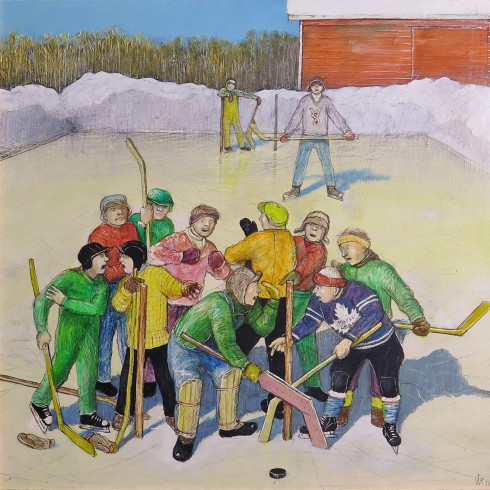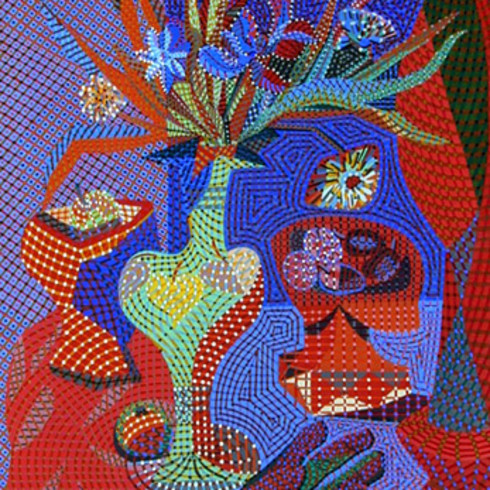Parking Lot Rue O'Connell Quebec, 1968
30.5 x 40.6 cm
Inscriptions
signed, 'JOHN / LITTLE' (lower right); titled, signed and dated by the artist, 'PARKING LOT RUE O'CONNELL QUEBEC JOHN LITTLE ‘68' (verso, upper stretcher)Provenance
Continental Galleries, Montreal
Acquired from the above by the present owners
As is characteristic in among the most interesting of Little’s paintings and what will likely be among his greatest legacy is his respect for the integrity of the urban core. Quebec City, like many North American cities, followed what was popular post WW ll terms of urban renewal, sacrificing the core where people formerly lived to a place where people would work. Part and parcel of the plan was to build an infrastructure of roads to facilitate the commute by car to and from the developing suburbs.
O’Connell street was once part of a strong French and Irish community, the Faubourg Saint-Jean, Quebec City. The initially francophone faubourg became home to Irish immigrants in the mid-nineteenth century, the latter finding more commonalities with francophones for their shared Catholic faith than with the English and Scots.
By 1876, the faubourg’s Saint-Jacques street name was changed to O’Connell to highlight Irish presence in the community, and was affectionately nicknamed “ilot O’Connell” (O’Connell islet). Unfortunately, the community’s home was sacrificed in the name of infrastructural development in the 1960s onwards. This decade saw the construction of the Dufferin-Montmorency highway, and the subsequent urbanization of the area with the building of hotels and office buildings. Ilot O’Connell was ultimately razed to make room for a parking lot and the Quebec City Convention Center.
The grey building in the left background, the Édifice Jean-Antoine-Panet, is the only remaining building in Little’s work.
Source:
https://archeologie.ville.quebec.qc.ca/sites/ilot-o-connell/histoire-de-l-ilot-o-connell/



